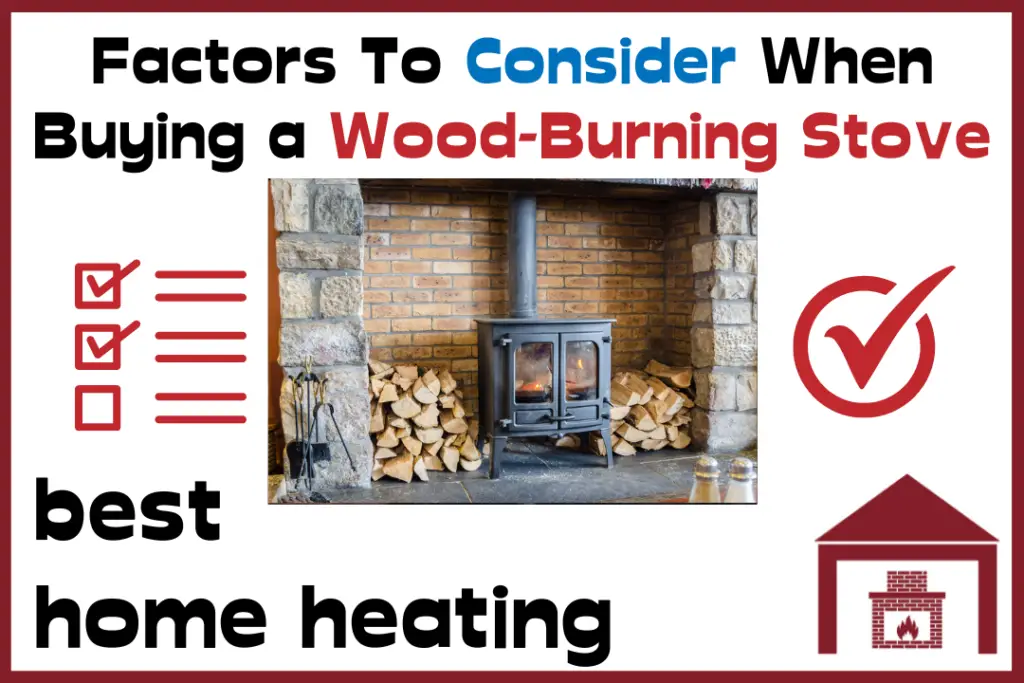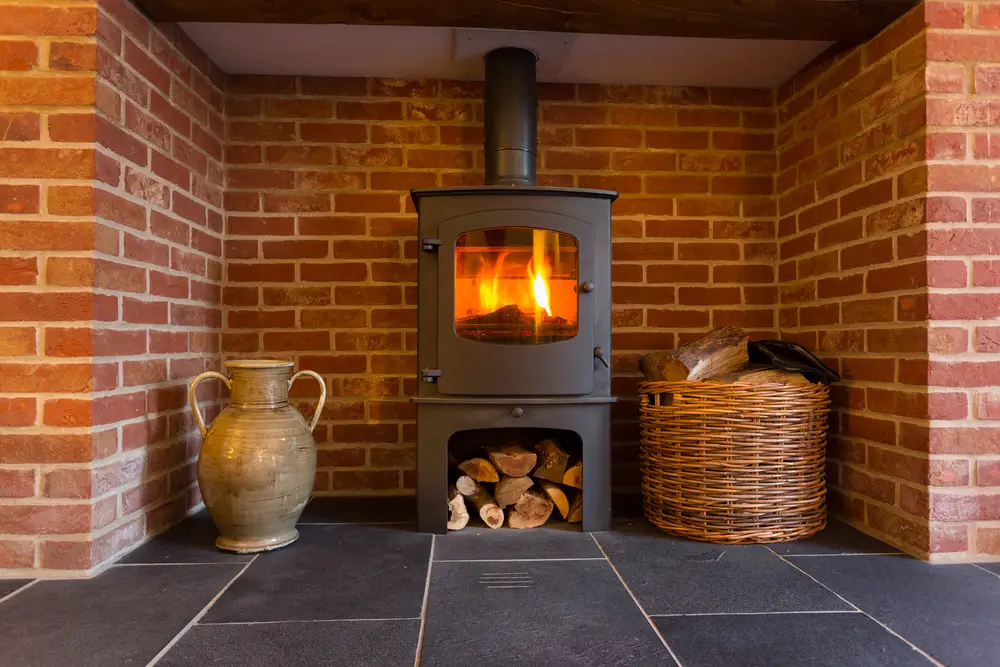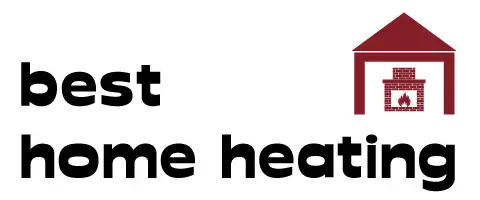When venturing into the world of wood-burning stoves, you’ll encounter a wide array of appliances, categorized by size, design, efficiency, and more, which can be overwhelming, making it essential to consider the key factors when making your purchase decision.
Be sure to choose a wood-burning stove that’s not too small or large for the space it needs to heat. Choose a design that goes well with the space. Modern Ecodesign wood-burning stoves are remarkably cleaner and more efficient than their older counterparts. Consider opting for a catalytic stove.
Curious to make the best choice for your home? Read on to find out more about the essential factors to consider when buying a wood-burning stove.

Right size
Where would you like to install the stove? Usually, there are two options: the living room or the kitchen. If you plan to put it in the kitchen, you need a relatively small unit. For a living room, a medium-to large unit is preferable in most cases. There is actually a simple mathematical way to figure it out.
Find the cubic space of the room and divide the number by 14. The result is a KW. Wood-burning stoves are measured in kilowatts (kW), which refer to the amount of heat the appliance should be capable of generating.
For instance, if your living room measures 6.6m long, 6.1m wide and 2.6m high, the cubic space of the room is 6.6 x 6.1 x 2.6 = 104.67 cubic metres. Now divide this figure with 14. You find 104.67 / 14 = 7.47. This is the required heat output (KW) of the stove needed to heat the room.
This is a precise way to know the size of the stove, but there is a less precise way as well. Just find the area of the room and look at the table below, which shows it all:
| Size of wood-burning stove | Heat output | Heating capacity |
| Small | 4-6 KW | Less than 500 square feet |
| Medium | 7-9 KW | 500-1000 square feet |
| Large | 10-15 KW | 1000-2200 square feet |
| Extra-large | 15+ KW | Over 2200 square feet |
Fuel type
Some wood-burning stoves only burn logs while others are multi-fuel appliances. One type is not necessarily better than the other, and they are also similar in price. Combustion of wood requires a bed of ashes, and therefore a dedicated wood-burning stove has no ash pan.
In contrast, a multi-fuel stove has a removable ash pan and a raised grate system. Do not buy a dedicated wood-burning stove if you would like to burn solid fuels other than wood, such as charcoal, coal, pit, dry dung, or hexamine fuel tablets.
Price of the stove
The price of a wood-burning stove can be anywhere between $500 and $2500, excluding the installation cost. The most basic types of wood-burning stoves, which come with no catalytic converter or blower fan, are the cheapest.
In the middle of the spectrum are non-catalytic stoves. Catalytic stoves are at the higher end. I should note here that while a catalytic stove has a big upfront cost, it burns less wood to produce the same amount of heat that a basic stove does. In other words, a higher end stove saves fuel costs in the long term.
Do you have an existing fireplace?
If you have an existing fireplace, you might want to rethink buying a wood-burning stove and consider putting a fireplace insert in that existing fireplace. It makes sense, because a fireplace insert is remarkably more efficient than a traditional fireplace.
However, an environmentally conscious homeowner would definitely prefer a modern freestanding wood-burning stove to a fireplace insert. That’s because the latter option means nothing but making the existing fireplace a bit more efficient.

Catalytic or non-catalytic stove
While a catalytic stove works in a different way from a non-catalytic stove does, one is not necessarily better than the other. What makes a catalytic stove different is a honeycomb-shaped catalytic combustor that re-burns the particulate and gasses released from the combustion. That’s why a catalytic stove is more efficient than a non-catalytic unit.
However, your choice should still be determined by your heating needs. If you want to use your wood-burning stove as the primary source of heating that’s continuous and stable, opt for a catalytic stove. And if you want to use your stove for supplemental or intermittent heating, a non-catalytic stove is the right choice for you.
Ventilation in the room
The room in which you would like to install your stove should have sufficient ventilation, because combustion requires oxygen. Also, due to inadequate ventilation, the smoke generated by the combustion fails to escape through the chimney.
If you are living in an old home, most probably there is enough ventilation. So, you can just install your stove. However, new homes are relatively airtight, and therefore require air vents.
In the UK, the law does not mandate installing air vents in homes built before 2008—if you are using a wood stove with a heat output of less than 5 KW. A newer house must have an air permeability of not more than 5 m3/hm2. The UK Government offers air permeability testing.
Warranty
Wood-burning stoves are durable, so manufacturers often offer generous warranties. Depending on the brand you choose, the unit may be even covered by a guarantee.
The length of the warranty varies. If a unit has a relatively long warranty, it simply means that the company knows the product is remarkably durable. In general, a 3-4-year warranty is sufficient. Note that the price of the stove may depend on its length of warranty.
If the stove comes with a guarantee, learn what the guarantee does not cover. Usually, only the body of the stove is covered by a guarantee.
If you are living in a smoke control area, buy a DEFRA-approved stove
In the UK, there are smoke control areas where emissions of smoke are strictly regulated. Look at this smoke control area map to find if you are living in such an area. You can burn wood in a smoke control area, but must use an exempt appliance.
If used as per the manufacturer’s instructions, a DEFRA-approved stove emits little to no smoke. Even if you are not living in a smoke control area, investing in a modern, efficient wood stove is a good way to reduce your carbon footprint.
Installation
To some extent, the efficiency of a wood-burning stove largely depends on the way it is installed. So, get the help of a professional installer instead of taking the installation as a DIY project. The cost of installing a flue may or may not be included in the price of your stove.
Being a combustion-based appliance, a wood-burning stove requires a hearth underneath it. The hearth must be adequately sized and made of a non-combustible material. If you want to get the stove installed in your existing open fireplace, you can just use the fireplace hearth.
Installation costs vary. If it is a basic wood stove, you can expect to spend anywhere between $500 and $1000 on installation. Being a combustion-based appliance, a wood-burning stove requires a chimney . If you are living in a flat with no existing chimney, you will have to get a twin wall flue system installed, which can cost up to $2000.

Conclusion
These are the main factors that should be taken into account when buying a wood-burning stove. The key is to know your options and choose a stove that meets your needs. Remember that a wood-burning stove is not just an appliance to heat your home; it’s something that can add to the aesthetic appeal of a room.
Pay particular attention to the stove’s size, efficiency, price and visual appeal. It’s always good to do a little bit of research rather than getting lured by the shine of a unit. Hopefully, now you are prepared to make an informed buying decision.


